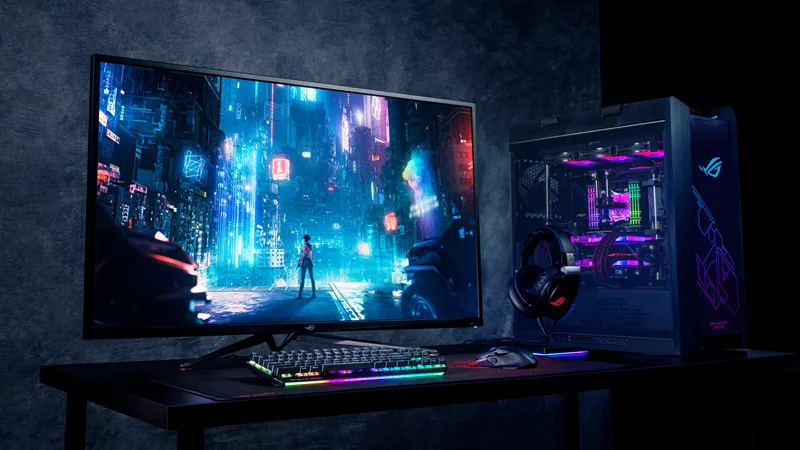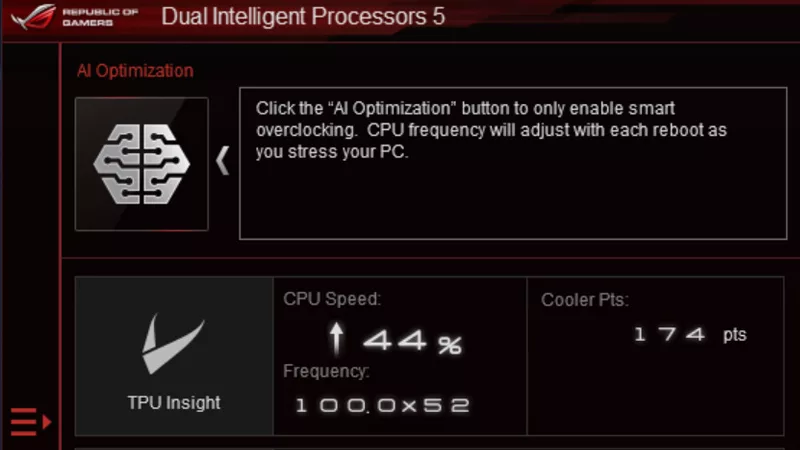How to increase FPS on the ROG Ally with FSR 3 and AFMF
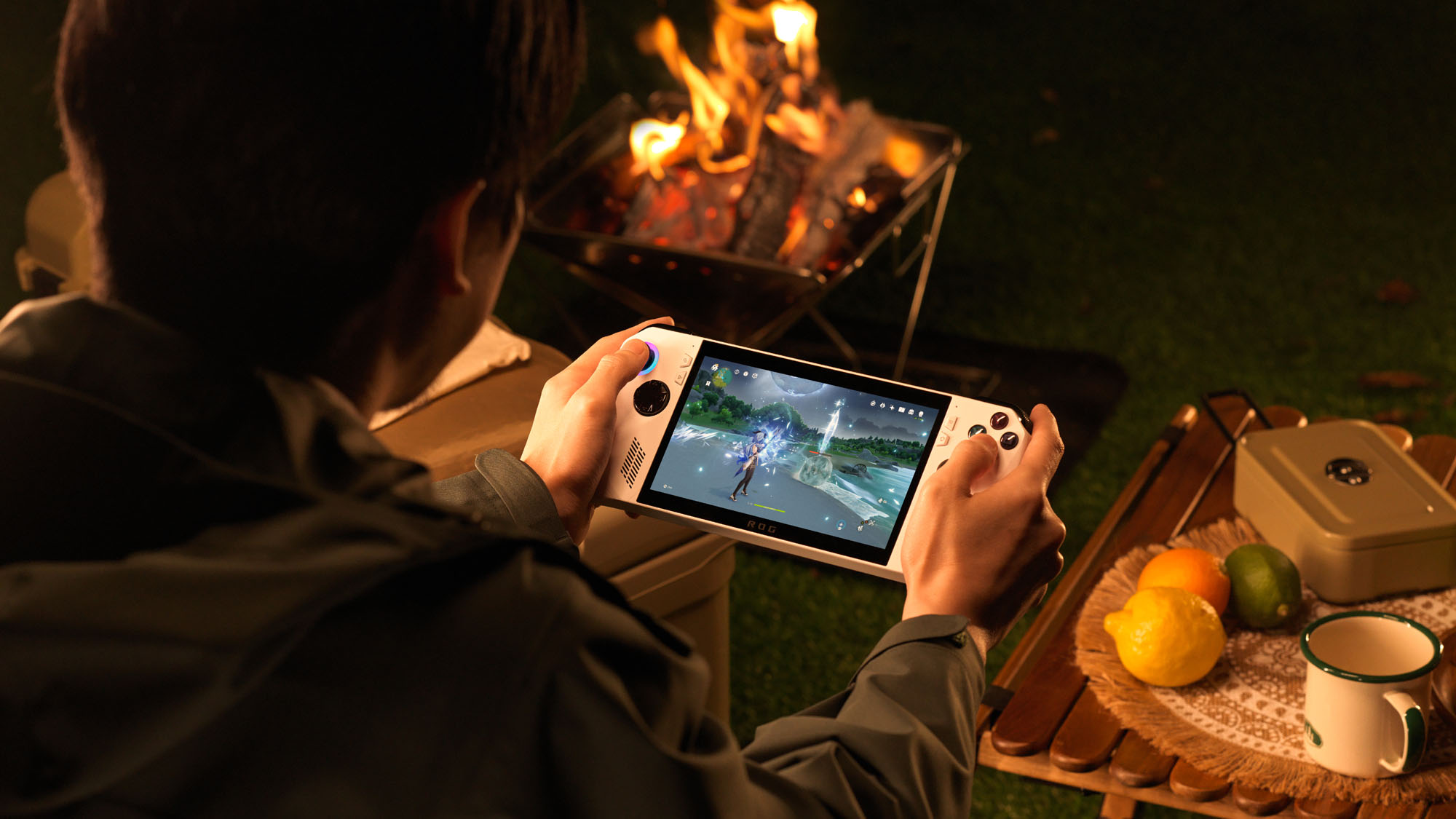
Despite its compact size, the ROG Ally is packed with power, thanks to the AMD Ryzen Z1 series APU inside. If you want an even smoother experience in your favorite games, the Ally also supports the latest AMD FidelityFX Super Resolution 3 (FSR 3) and AMD Fluid Motion Frames (AFMF) features, allowing for intelligent frame generation that adds even more smoothness. Here’s how to boost your FPS with these exciting new technologies.
This is part of our ultimate guide to the ROG Ally series of articles.
FSR 3 frame generation increases FPS in supported games
FidelityFX Super Resolution, or FSR, is a suite of performance-boosting technologies built into modern games. The first version of FSR was an upscaler that rendered your game at a lower resolution, then scaled it up intelligently to boost performance while retaining image quality. FSR 2 improved on this technology by incorporating temporal information into the algorithm for even higher image quality — you can read more about AMD’s different upscaling features in this guide.
FSR 3 incorporated an entirely new technology to games known as frame generation. By analyzing that same temporal data, frame generation can use information from the current frame to generate new frames that slot in between traditionally rendered ones. The result is gameplay that appears much smoother, even at high graphics settings. And because FSR is integrated into each game by the developer, UI elements and text will be rendered normally, resulting in a high-quality image with fewer artifacts than, say, using the motion interpolation setting on modern TVs. Latency will also be lower than typical interpolation methods, thanks to optimizations from AMD in the frame generation pipeline.
This does, however, mean that your game needs to support FSR frame generation in order to make use of it. You can see a list of games that support FSR 3 here.

To enable FSR 3 frame generation, open your game’s Graphics or Display settings, look for the AMD FidelityFX Super Resolution 3 setting and turn Frame Generation on. AMD also recommends turning on a frame limiter or VSync to keep your framerate within the display’s refresh range. In addition, the higher your starting framerate, the smoother your experience will be and the lower latency you’ll experience. So AMD also recommends adjusting your in-game settings to target 60 FPS if possible before applying frame generation.
AFMF adds smoothness to games that don’t support FSR 3
While FSR 3 frame generation is getting added to new games all the time, certain titles may not support this technology, or may have been released before FSR hit the scene. In those cases, AMD has a driver-level feature called AMD Fluid Motion Frames, or AFMF, that can apply frame generation to a much larger variety of games.
While AFMF is based on similar technology to FSR 3, it doesn’t have as much information to work with — since it isn’t integrated into the game, it doesn’t have motion vectors to incorporate, and UI elements will be part of the interpolated frames. As a result, FSR 3 is preferred if your game supports it. If the game you’re playing doesn’t support FSR 3, then you can enable AFMF.
In addition, there are a few things you’ll want to keep in mind when using AFMF. Like FSR 3 frame generation, you’ll have the best experience if you adjust your in-game graphics settings to hit around 60 FPS before applying AFMF — the more frames you start with, the better AFMF will work. You can see our recommended ROG Ally settings for popular games on here.
Next, you’ll need to ensure your game is running in Full Screen exclusive mode, as AFMF does not work in windowed mode. In addition, you’ll also want your display set to 120Hz in-game with VSync turned off. Note that this may produce screen tearing if your game exceeds 120 FPS, so you may want to limit your base framerate to something below this — with most games, a 60 FPS cap will ensure consistent frame pacing, but what you choose is up to you. Also, while AFMF works in thousands of games, there may be some games it does not work with — like those with built-in framerate caps locked to a certain refresh rate.
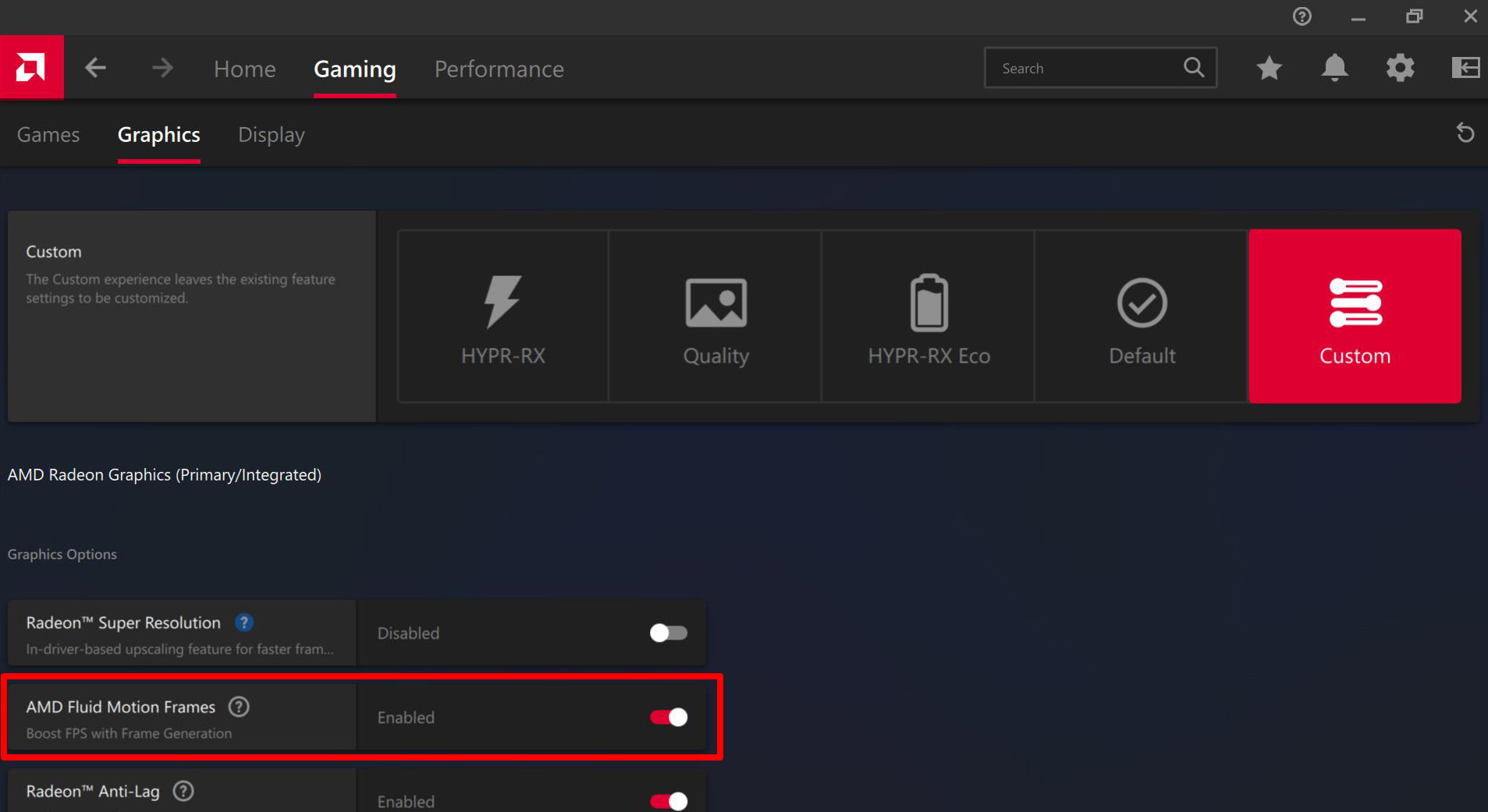
Finally, to enable AFMF, make sure your GPU driver is up to date in Armoury Crate SE. Then click the Start menu, open the AMD Software, and head to Gaming > Graphics. Toggle the AMD Fluid Motion Frames switch on.
Note that due to the way AFMF works, you won’t be able to use the ROG Ally’s built-in real-time monitor to see performance metrics as you play. You can, however, use AMD’s own performance overlay if you’d like to monitor FPS, temperatures, and other information. In the AMD Software, head to the Performance tab, click the Overlay option on the right side, and toggle the Enable Metrics Overlay option.
Do it all in one click with HYPR-RX
FSR 3 and AFMF are only a few of AMD’s game-optimizing technologies. AMD has also made it easier than ever to get the most out of your games with a new feature called AMD HYPR-RX. With one click, AMD HYPR-RX will turn on a number of performance-boosting settings so you can get straight back to gaming. Just turn HYPR-RX on in the AMD Adrenalin software under Gaming > Graphics.
For example, if the game in question is in AMD’s HYPR-Tuned games list, enabling HYPR-RX will automatically set Radeon Super Resolution (RSR) or FSR to the Quality preset, alongside AMD Radeon Anti-Lag and AMD Radeon Boost. HYPR-RX will instead enable AFMF to ensure you get the smoothest experience possible. HYPR-RX does not currently enable FSR 3 frame generation, so if your game supports the feature, you'll want to turn that on manually in addition to HYPR-RX (and disable AFMF if it's already turned on).
With these tools in tow, you can achieve serious performance on the ROG Ally and play all your games anywhere. For more tips on optimizing your games, check out the rest of our ROG Ally guides – including how to boost gaming performance on the ROG Ally and even what settings to tweak in specific games for the best experience.
| Model | Type | Where to Buy (US) | Where to Buy (CA) |
|---|---|---|---|
| ROG Ally (Ryzen Z1 Extreme) | Handheld | ASUS Best Buy |
ASUS Best Buy |
| ROG Ally (Ryzen Z1) | Handheld | ASUS Best Buy |
|
| XG Mobile (Radeon RX 6850M XT) | eGPU | ASUS Best Buy |
|
| XG Mobile (GeForce RTX 4090) | eGPU | ASUS EXcaliberPC |
ASUS Memory Express |
| ROG 65W Gaming Charger Dock | USB Hub | ASUS Best Buy |
ASUS |
| Official ROG Ally Travel Case | Case | ASUS Best Buy |
ASUS Best Buy |
Ultimi Articoli

Meet the first AI gaming router: the ROG Rapture GT-BE19000AI
AI technology empowers the ROG Rapture GT-BE19000AI to elevate every moment of your connected life.

Introducing the ROG G700 prebuilt gaming PC: your next-gen power tower
We've crafted a next-gen tower from the ground up and give you the ultimate gaming experience, fine-tuned, tested, and assembled by the people who made ROG the best brand in gaming.
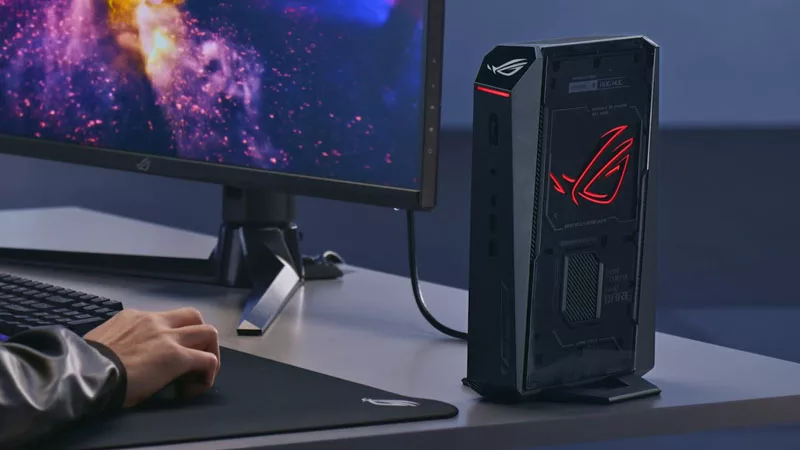
The 2025 ROG NUC: Your next-gen mini PC for tomorrow's AAA games
Not all gamers have room for a standard desktop PC. For those who want the power, connectivity, and features of a desktop in a compact setup, we offer the 2025 ROG NUC.

AMD CPUs and the legendary Apex series combine forces for the first time in the ROG Crosshair X870E Apex
The ROG Crosshair X870E Apex is built for record-breaking performance with an overclocking-ready memory layout.
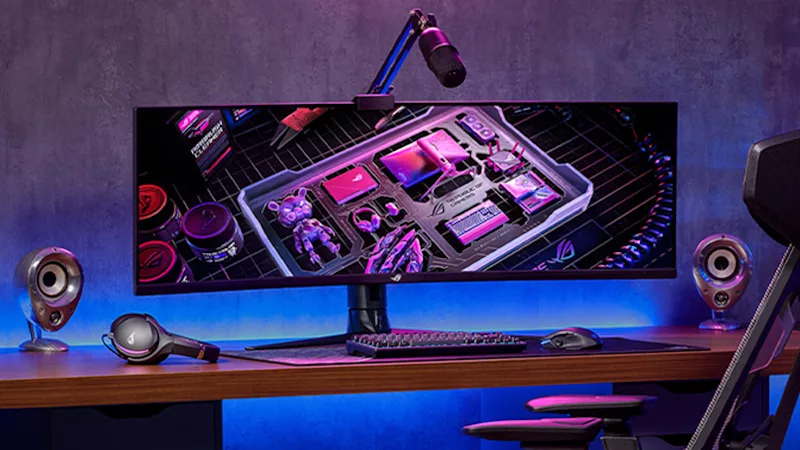
How to use ASUS OLED Care to protect your ROG OLED monitor
ASUS OLED Care minimizes the possibility of burn-in with your ROG OLED gaming monitor. Here's how to use its features.
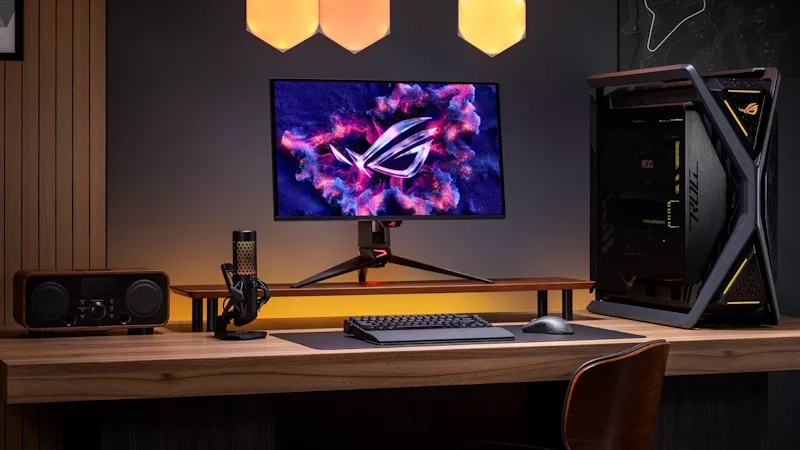
The ROG Swift OLED PG27UCDM stuns with a 4th Gen QD-OLED panel
A 4th Gen QD-OLED panel, stunning 160 PPI images, and the latest ROG OLED tech set this premium monitor apart from the pack.



